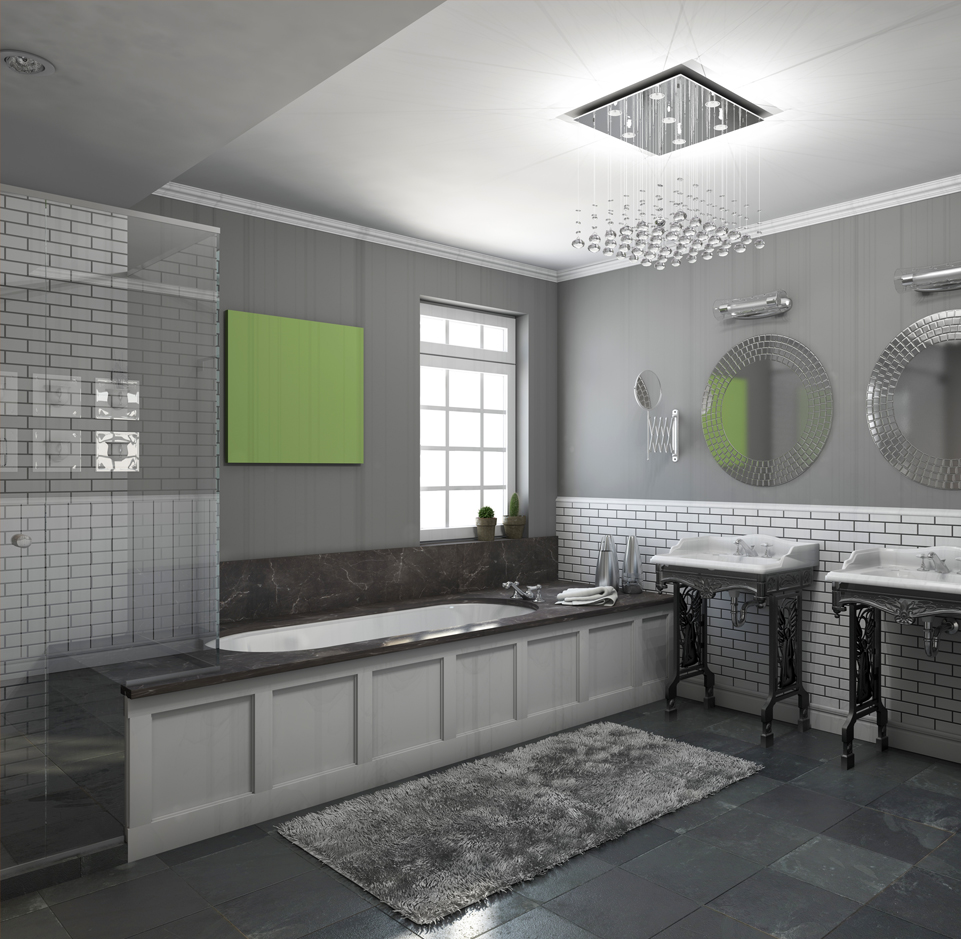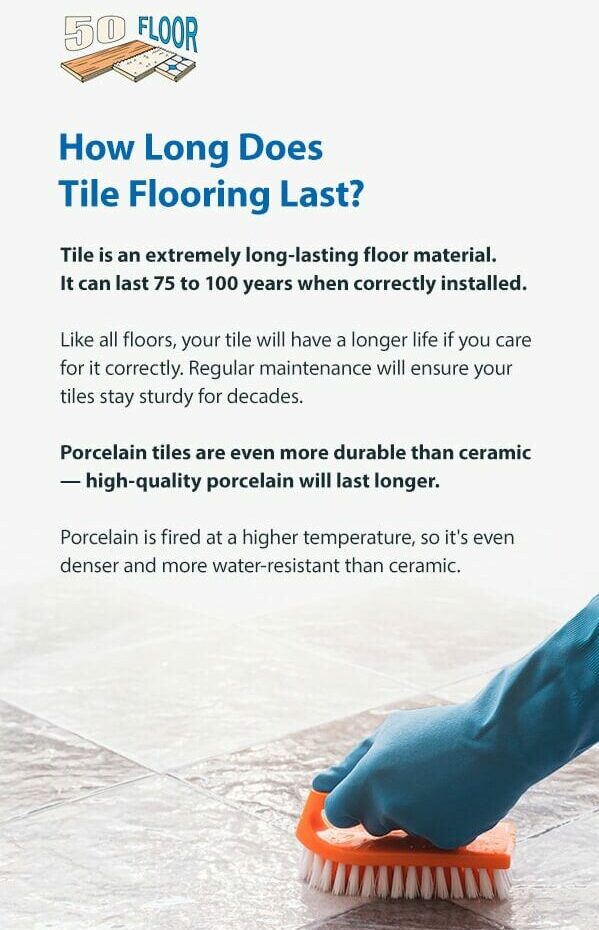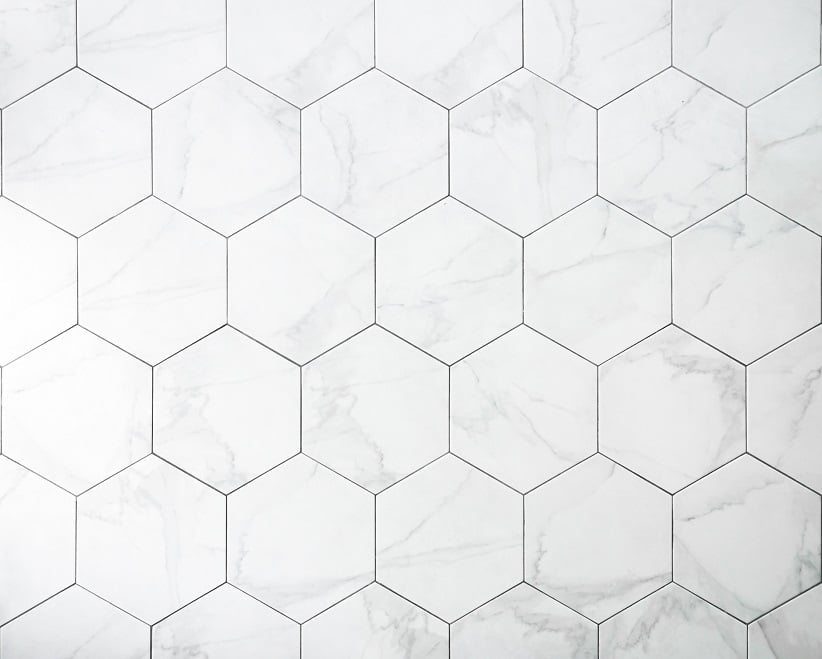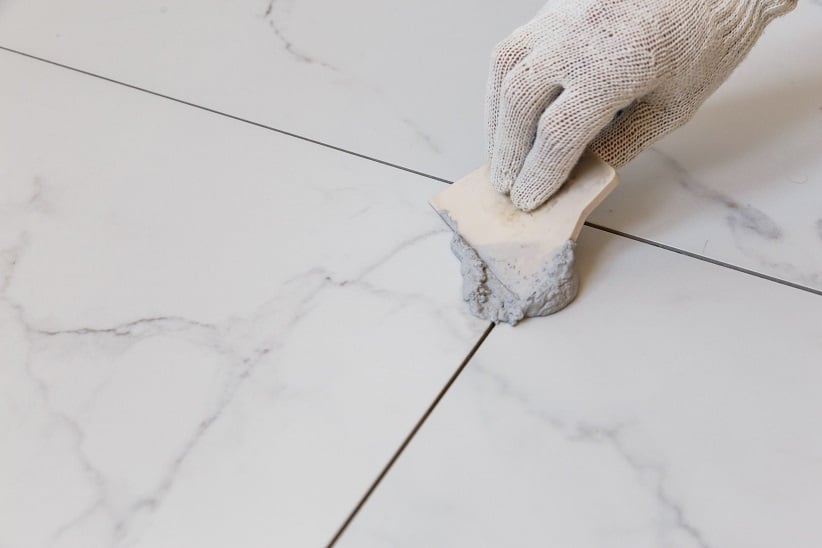

Versatile, durable and long-lasting, tile is one of the best floors for high-traffic, moisture-prone rooms. It gives any space an elegant, upscale aesthetic and the endless options allow you to customize floor patterns easily. Check out our introduction to tile floors and discover the types, maintenance level and pros and cons of tiles floors.
What Is Tile Flooring and What Is It Made of?
Tile flooring is a popular hard-surface flooring. Made from clay and synthetic materials, tile is formed by cutting them into the desired shapes, heating them in a kiln and covering them with a protective glaze or finish. Tile is typically used in bathrooms, mudrooms and laundry rooms because it’s waterproof and won’t warp or crack when exposed to moisture. The heating process makes tile incredibly durable — when installed correctly, it’s resistant to chips, stains, scuff and dents.
Clay is one of the more common materials used to make tile flooring. Water, sand, clay, metal, stone and even glass are mixed to form the different types of tiles. Once materials are mixed and the tile is molded, it’s heated to give the tiles their hardness. During installation, a layer of mortar is placed on the ground. Tiles are then attached to the mortar and leveled. Finally, grout is applied to ensure the tile edges are sealed and secure.
Features of Tile Flooring
Tile flooring is already durable and moisture-resistant, but there are additional features you can look into to get even more out of your tile. Consider getting uniquely-shaped tiles to add more dimension to your floors and make your home design stand out. Along with different design options, here are some practical features you can choose for your tile floors:
These and other features will help your tiles resist wear and tear for a long time.
Pros and Cons of Tile Flooring
There are many advantages to tile flooring, especially when compared to vinyl flooring. Before making your flooring purchase, you should consider each material’s benefits. Make sure the type of flooring you choose fits all your requirements so that you’re getting a cost-effective, long-lasting floor for your home.
Let’s look at some tile flooring pros and cons to help you decide if it’s right for you.
Pros
There are multiple benefits to tile flooring. Its solid and damage-resistant properties make it ideal for home flooring.


Cons
There are a few cons to tile floors that might make them less suitable for some of the rooms in your home. However, most of these drawbacks are easily worked around.




How Long Does Tile Flooring Last?
Tile is an extremely long-lasting floor material. It can last 75 to 100 years when correctly installed. Like all floors, your tile will have a longer life if you care for it correctly. Regular maintenance will ensure your tiles stay sturdy for decades.
Porcelain tiles are even more durable than ceramic — high-quality porcelain will last longer. Porcelain is fired at a higher temperature, so it’s even denser and more water-resistant than ceramic. Additionally, porcelain tiles will hold their color longer than other materials when exposed to sunlight. They won’t fade quickly, so you can be sure your tiles will look pristine even with sunlight shining on them.


Styles of Tile Flooring
You can explore a variety of finishes, patterns, colors, sizes and more to find the best tile to suit your home.
How to Choose Tile Flooring
You’ll want to choose your tile flooring carefully. Once it’s installed, you don’t want to find yourself regretting the style you picked. Like any home renovation project, you should carefully examine your options and find the best one for you based on budget and style.
Before picking a tile flooring, you should consider these factors.
Additionally, you should think about the other flooring in your home. If you have laminate, you’ll need to know how to pair laminate flooring with your new tiles. Pick tile in the same color family as the laminate, or go for a different neutral to blend the two styles. This way, you don’t have to worry about trying to find an exact match, and your flooring will still look beautiful.


How to Install Tile Flooring
Your tiles’ life span and durability depend on the material and installation. A poor installation could leave you with cracked, uneven tile floors you’ll have to replace. Always choose a reputable flooring company for your tile installation to ensure you get professional, quality work.
At 50Floor, we offer expert tile assistance and installation. Once you’ve selected your tile and the installation date is set, you can relax while we handle the complicated work. On installation day, our team will finalize the material, job and payment with you. They’ll give you a job completion estimate, so you know what to expect from the installation.
After this, we’ll get to work installing your tile floors, ensuring they’re laid down securely and correctly. Once the work is complete, we’ll review the final details and provide you with care information so you can maintain and enjoy your new floors.
Tile Flooring Care
The best way to increase the life of your tile floors is through proper care and maintenance. All household flooring needs to be cleaned and touched up so you don’t run into more significant, expensive problems in the future.
Always refer back to your warranty before jumping into tile cleaning and care. Certain products or methods can void your warranty, which you want to avoid. Read it thoroughly before starting any cleaning to ensure you won’t damage the tile.
Tile is resistant to water damage, so don’t be afraid to break out your mop. Sweep the tile first to remove any loose dirt and debris. Once this is done, just take a mop or soft-bristle brush and some warm soapy water and start cleaning. Use the brush to clean the grout carefully — dirt can be hard to remove, but a little elbow grease goes a long way. Once you’ve finished mopping, take a dry cloth and wipe up any excess water.
Tile grout needs some touching up to keep moisture out. If you start to notice mold, lots of damage and dirt on your tile grout, it’s time to re-grout. Call a professional to re-grout your tile and restore your floors to their pristine condition. If you have any cracked or damaged tiles, check your warranty. You might be able to get professional repairs or replacements for your floors.




Shop 50Floor for Tile and Installation
Now that you’ve got all the tile basics under your belt, it’s time to start your flooring search. Talk to our team and explore 50Floor’s wide selection of high-quality flooring tiles. We’ll work with you to find the tile that fits your design and budget. We even offer at-home samples, so you can see what the tile would look like in your home.
Contact us and begin your tile installation today!






